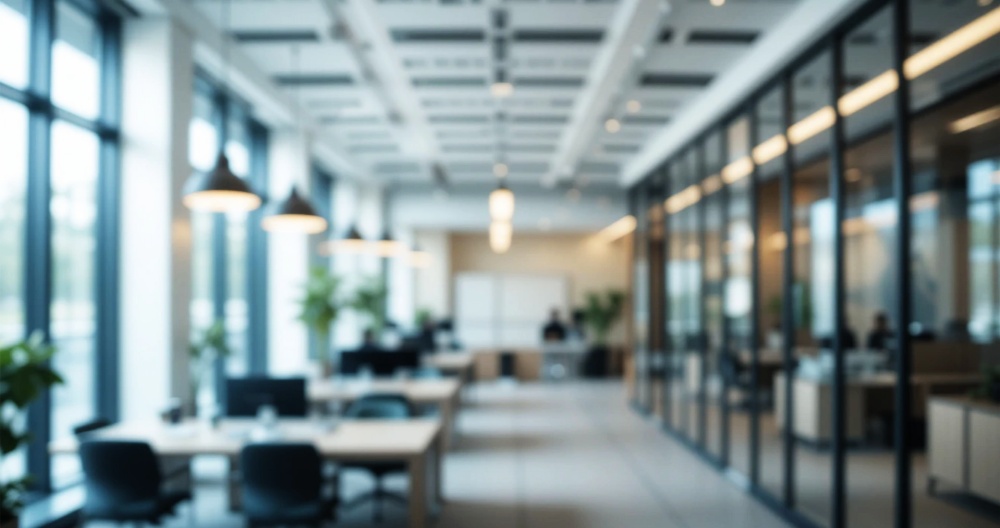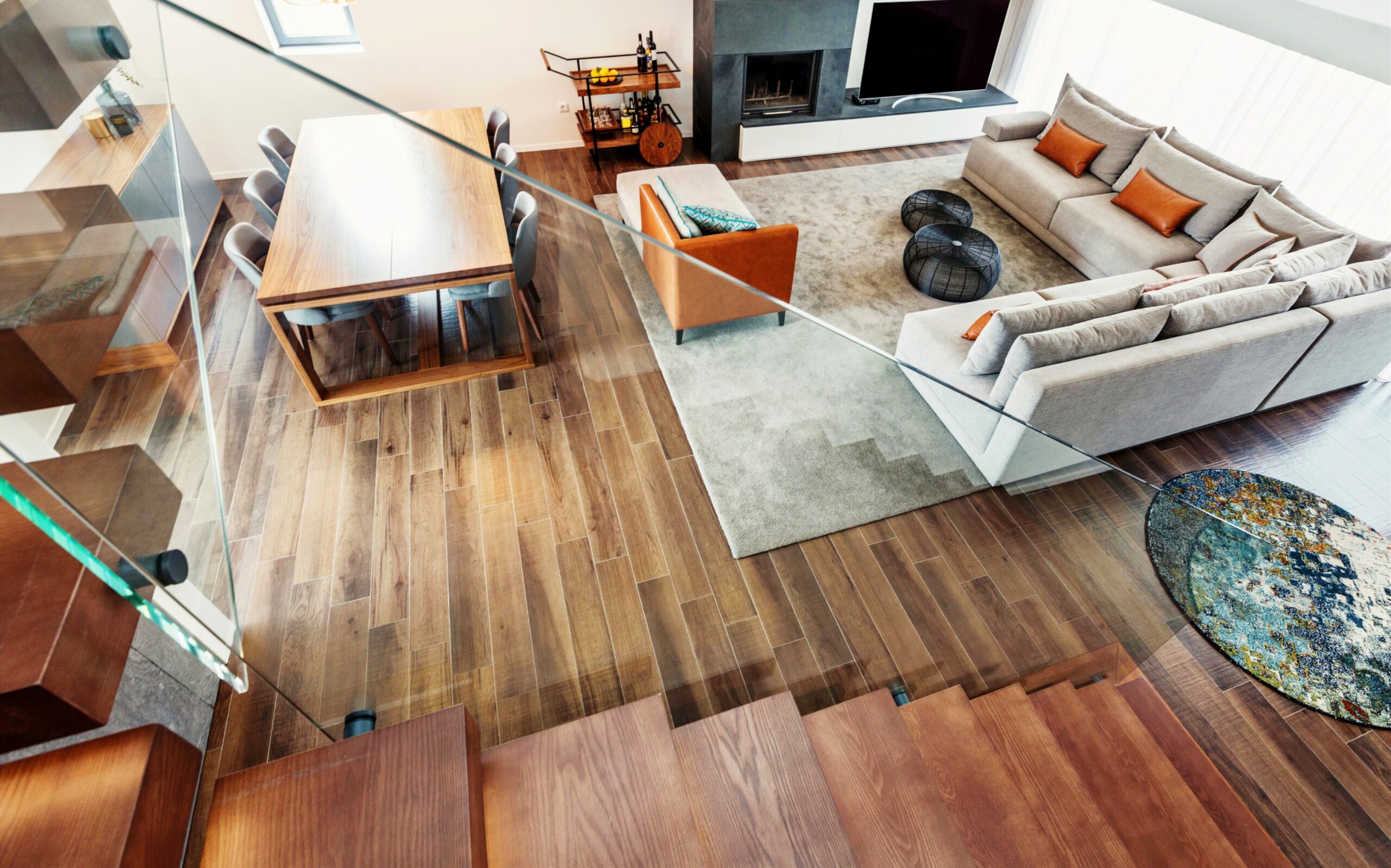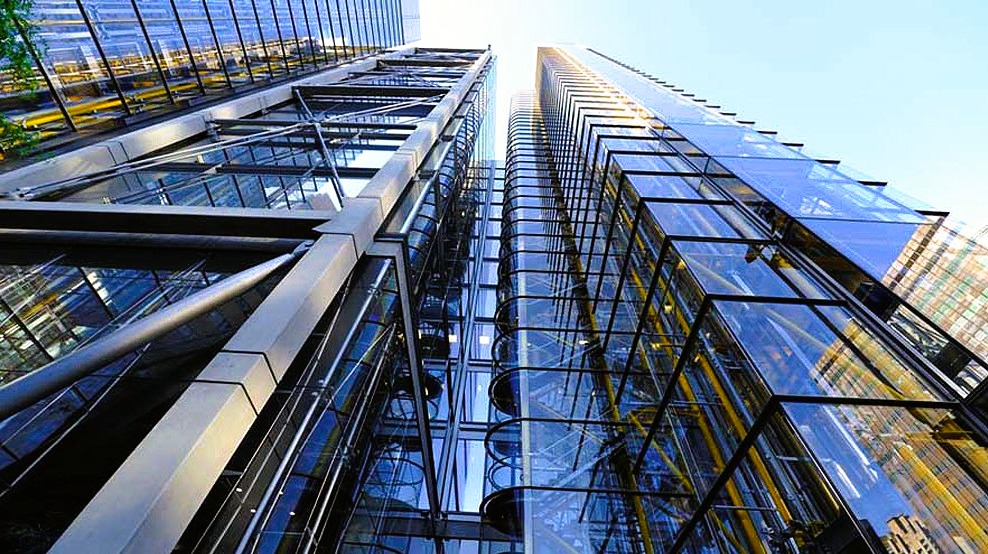10 workspace interior design trends for 2025
Long gone are the days of bare minimum business facilities, where employees clock in and out without expecting to spend time in surroundings that are both functional and comfortable.
Now, well into the 2020s, the demand for high-quality workspaces is higher than ever, with employees expecting more from their workplaces to make it worth their time commuting to an office rather than working from home.
When it comes to remote working, too, the standards have also increased. If hybrid working is here to stay, then people need effective spaces to work from home, as well – especially those who are self-employed.
Additionally, with millennials and Gen Z taking over the workforce, employers must offer the greater levels of flexibility, creativity, and aesthetics these groups are looking for if they want to retain staff.
Simply put, offices should be well-equipped, vibrant, yet adaptable spaces that inspire productivity, all while supporting employee well-being and committing to sustainability.
But what design steps should you follow to accomplish this?
Here, Glass Interiors lists some of the top home and business office interior trends you should take into consideration for 2025, explaining how our glass partitions can help you to achieve the best possible design.
1) Hybrid-friendly design
The rise in remote working spurred by the COVID-19 pandemic has seen businesses around the world struggling to adapt, but to keep up with today’s ways of working, it’s essential to consider remote-first design.
This doesn’t mean encouraging everybody to work from home or elsewhere – it’s about recognising the benefits of flexibility in remote working and the new connections it’s possible to build with longer-distance communication.
Workspaces should be designed with hybrid working in mind – blending facilities to support both in-person and remote work.
This is best achieved by integrating technology that ensures employees and collaborators who can’t physically be in the room can still be ‘in the room’ – making valuable contributions and keeping things running smoothly.
Whether an office opts for hot-desking or creates dedicated spaces for full-time in-office workers and hybrid workers who only come in on certain days, moveable glass screens can help to adjust your layout to suit your flexible workforce.
2) Multi-functional furnishings
Due to the changing nature of working habits and rising lease costs, many businesses are choosing to downsize their workspaces and optimising their offices to make the space they have work best for them.
This is where multi-functional and modular furniture does a lot of heavy lifting – being compact enough to save space while also being versatile enough to serve multiple purposes within the same space.
Modular workstations, seating, and storage options allow areas to be reconfigured as needed to benefit varying team sizes and tasks, encouraging collaboration and productivity with minimal disruption.
For those working from home, likely with much less square footage to work with, it’s even more important to find furniture that can fold away, provide extra storage, or be moved to maximise utilisation and adapt to your dynamic needs.
Again, portable dividers like free-standing glass screens are excellent solutions for making spaces more easily adaptable.
3) Biophilic green spaces
As we’ve discussed before in our blog about the health benefits of glass partitions in offices, ensuring that there is enough natural light throughout your workspace is vital.
Sunlight can help to boost Vitamin D, reduce stress, and improve energy and concentration levels – thereby increasing productivity and employee satisfaction with better physical and mental health.
Natural lighting is just one aspect of the biophilic design trend that’s been growing for several years now.
Biophilia is all about the need to feel connected with nature – as many studies have proven that lack of sunlight and isolation from natural green environments can contribute to stress, depression, and many other health problems.
Many employers have been guilty of creating dark, dreary, and lonely offices – but bringing some greenery indoors, using nature-inspired materials and colours, and boosting the spread of natural light with glass partitions instead of opaque dividers can make a massive difference.
4) Eco-friendly sustainable materials
Going green is more than just a trend – sustainability is a necessity in every part of our lives, from using energy-efficient systems to choosing recyclable eco-friendly materials.
Modern businesses and workers understand the importance of reducing our negative impact on the planet and preserving the environment, so overhauling your workspace to reduce your carbon footprint is a must.
Doing so is not only better for the planet, but also great for business, as a demonstrable commitment to sustainable practices can give your brand and reputation a positive boost – attracting talent, collaborators, and consumers alike.
To improve your green credentials and cut your energy bills, consider:
- Using upcycled or sustainably-sourced materials
- Installing sustainable glass partitions
- Switching to LED lighting and energy-efficient electronics
- Going paper-free where possible
- Encouraging electric vehicle initiatives
- Investing in better plumbing, ventilation, and insulation
Whether you work from home or on business premises, these measures can help you on the path towards carbon neutrality whilst reducing long-term costs at the same time.
5) Activity-based working
Sometimes referred to as ABW for short, activity-based working is a newer style of working that emphasises the need for multiple types of work settings that are tailored for different tasks.
This is quickly gaining popularity amongst workers who prefer a greater degree of autonomy over their workspaces, allowing greater spontaneity and flexibility and catering to a more diverse range of working preferences.
Facilitating activity-based working means providing a selection of workspace types to suit different needs, including standard desks, quiet focus spots, formal meeting rooms, casual socialising areas, and transitional spaces.
Using elements like glass partitions with doors and different types of furnishings can distinguish different places and allow workers to choose the most productive space for their particular tasks, improving engagement and efficiency.
Promoting more choice than just an open-plan expanse of desks and private meeting rooms can be great for adapting to ad-hoc needs and enhancing productivity.
6) Noise management solutions
A key part of designing hybrid-friendly, multi-functional spaces to encourage activity-based working is noise management.
All work environments should provide a comfortable level of background noise to ensure there are neither too many distractions nor too little stimulation. However, some occasions call for more privacy or additional focus.
Too much foot traffic and loud conversations can cause problems for workers and clients alike, but when you use acoustic glass for partition walls, you can divide areas and minimise sound transfer without sacrificing light flow.
For many people, productivity is dependent on having a sufficiently quiet and private area to work in – especially those who work from home and share living spaces with others.
Not only are glass partitions for meeting rooms in offices a must-have to keep sensitive details on a need-to-know basis, but for remote workers who don’t have a dedicated home office, even small sound-muffling panels or screens can help to create a more private working space within a bedroom or lounge.
7) Wellness amenities
If your workspace doesn’t foster a healthy environment that prioritises employee wellbeing, this will not only have a negative impact on their work, but could also increase absences and lead to higher staff turnover and recruitment costs.
Even if you work from your own home or hire a co-working space, it’s just as important to choose somewhere that not only features ergonomic furniture, but also has a separate ‘wellness’ space.
Furniture such as adjustable-height desks and chairs is essential for those sitting and working on computers for many hours a day, as well as comfortable lighting and temperature levels, to avoid impairing both physical and mental health.
However, there should also be a recreational area that workers can retreat to for breaks whenever they need to de-stress and truly relax – such as a meditation room.
Working and relaxation spaces should be clearly defined to avoid crossover and maintain a good work-health balance, but both should have features such as lots of natural light and not much noise – which insulated glass partitions can help with.
8) Accessibility for everyone
Any forward-thinking and thriving business should create a welcoming environment for everyone, without discrimination.
In the 2020s, diversity is acknowledged and celebrated, as business leaders increasingly come to understand that different viewpoints and ways of working can bring value to a team.
So, to achieve a positive and healthy work environment for everybody, inclusivity and accessibility cannot be overlooked.
It’s estimated that around 1 in 7 people are neurodivergent (meaning their brains process information differently), while 23% of working-age adults in the UK are disabled.
Both mental and physical capabilities and sensitivities should be taken into consideration when designing workspaces, ensuring that all workers have everything they need to do their jobs effectively and safely.
This adds another element to the importance of multi-functional spaces, noise management, and wellbeing-centred design, re-emphasising the points discussed above.
9) Smart technology integration
Another design trend that’s been growing over the last decade is the integration of smart technology – making businesses and homes around the world more comfortable, efficient, and convenient for everyone using each space.
Fast-paced technological advancements are constantly modifying how we work and go about completing daily tasks, so any business owner who wants to get ahead needs to at least stay abreast of the latest tech solutions.
Sophisticated automation, including sensor and voice control technology, can help to regulate energy-efficient powered devices, lighting, temperature, ventilation, and security features.
Not to mention digital assets – from virtual conferencing systems and interactive whiteboards to workflow management tools and calendars for booking desks or rooms, smart technology and automations can streamline processes and enhance productivity levels while improving workers’ health at the same time.
Of course, smart technology is only as efficient as the environment it’s used in, so make sure your design prioritises all of the characteristics above. From natural lighting and sustainability to multi-functionality and noise control, glass partitions are the crucial support actor you need to stage the full play.
10) Strong brand identity
Last but not least, branding is everything. As we’ve seen from the growth of social media, anything from a colour to a catchphrase can propel a person or company into local, national, or even worldwide fame – so if your business doesn’t have a strong identity, how do you expect to compete in modern markets?
Whether your business ethos is bold like ‘brat’ green or mindful and demure, your workspace design needs to reflect what your company does and the cultural identity it embraces.
This can be represented through your choices of colour palettes, materials, furniture, layouts, and more.
Most importantly, though, you need to have your business branding front and centre in a way that asserts exactly who you are throughout the entire space without overpowering it.
The perfect way to do this is to incorporate your branding into glass partitions with manifestations – printing custom logos or patterns onto glass walls and doors as both a safety feature and self-promotion.
Revamp your workspace with glass partitions in 2025
Now you’re up to date on the strongest interior design trends for commercial and home offices, are you looking for help incorporating them into your own workspace?
Here at Glass Interiors, we have plenty of experience in designing, supplying, and fitting both domestic glass partitions and office glass partitions, including single walls and rooms with glass doors.
A bespoke glass partition system could be the cornerstone to your new optimised office space, helping you to incorporate all of the other excellent tips from this article around them.
So, why not get in touch to learn more about how we can help with your workspace makeover?
To discuss our wide selection of glass partition options for your business premises or private residence, call our team on 0203 793 5455, or email your details to info@glass-interiors.co.uk and we’ll get back to you with more information!






